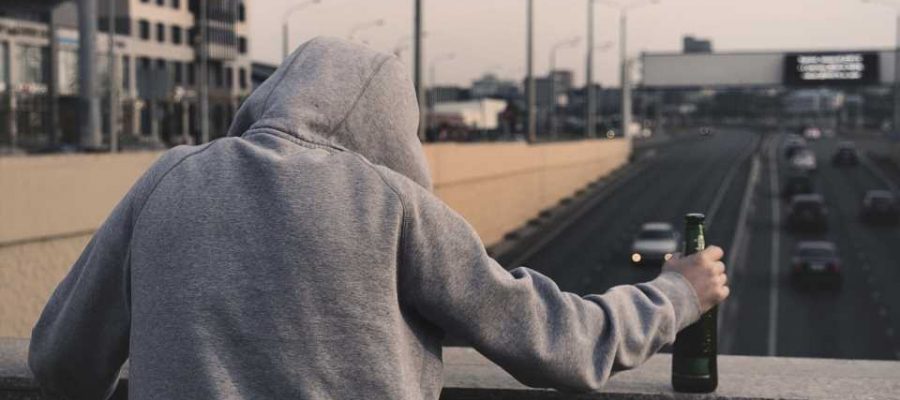
July 2023 marks the one-year anniversary of the national launch of the 988 Suicide & Crisis Lifeline. Currently, more than 200 call centers throughout the U.S. are responding to 988 calls. But few people know it exists. SciLine interviewed Dr. Emmy Betz, a professor of emergency medicine at the University of Colorado, who discussed the critical need to raise awareness about 988, the increasing numbers of suicide deaths in the U.S. and the signs that someone is thinking about suicide.
Below are some highlights from the discussion. Answers have been edited for brevity and clarity.
Can you share some statistics about suicide in the U.S.?
Emmy Betz: Suicide continues to be a leading cause of death in the United States. In fact, it’s the 12th-leading cause of death among all ages. We had been seeing suicide rates rise from about 2000, up until around the COVID era. There was a small dip in rates during those COVID years, which was great, but unfortunately we’ve now seen rates increase again. In 2021, there were 48,000 suicide deaths in the U.S., which is about one every 11 minutes.
What about youth suicide?
Emmy Betz: Suicide rates among youth in particular have increased. Between 2011 and 2021, suicide rates for youth rose 60%. Particularly concerning are increases in suicide rates among young individuals of color, where there have traditionally been lower suicide rates.
Who should call 988, and when?
Emmy Betz: 988 is the suicide and crisis lifeline. I want to really emphasize, it’s not just for suicide. It’s for anyone who’s experiencing substance abuse, mental health crisis, emotional distress or suicidal thoughts. You can call for yourself. You can call for someone in your family or a friend. It’s available 24/7, and it’s free and confidential.
How has the first year of the 988 hotline gone?
Emmy Betz: In the first year, 988 answered nearly 5 million calls, chats or texts. That’s great news. But one thing that I think is concerning: There was a Pew Research Center survey published in April 2023. Only 13% of respondents said they knew both about 988 and what it was for. So I think we still have a ways to go in terms of raising awareness among people about what the hotline is, when you should call and then what happens when you do call.
What are warning signs that a person is thinking about suicide?
Emmy Betz: It can vary. Sometimes, it can look like what we think of classically as depression—somebody who might seem sad, seems withdrawn and not doing the things that they previously have been wanting to do.
Certainly anything like talking a lot about death, mentioning suicide, mentioning not wanting to be around anymore—those are all very concerning. Some people, though, can seem angry or sort of ramped up or different.
The main thing to look out for is if someone says that they’ve lost hope or that they aren’t looking towards the future anymore.
And perhaps the most important thing to know—it’s OK to ask. If you’re ever worried that someone might be having thoughts of suicide, it’s fine to ask them directly. You’re not going to prompt suicidal thoughts by asking that question.
What are some prevention strategies for firearm suicides?
Emmy Betz: Here at the University of Colorado, I lead the firearm injury prevention initiative, which is a new program funded through the medical school that hopes to reduce all sorts of firearm injuries and deaths, including suicide.
Where I live in Colorado, 73% of our gun deaths are by suicide. It’s a critical problem in our state. And these deaths are preventable.
Suicide typically occurs in the context of some kind of crisis, whether it’s related to a job, or a recent breakup with a romantic partner, or something else. Prevention is all about getting people through that high-risk period, to get the treatment or resources they need.
We know that if a person uses a firearm in a suicide attempt, about 90% of the time they die. So my work and the work of our initiative really focuses on how can we reduce firearm access when someone is in that high-risk period.
And importantly, it’s not about confiscation. It’s not about legislation. It’s about engaging with communities, educating communities and educating health care providers about what we can do to reduce firearm access—specifically, encouraging people to take steps to lock up guns differently, such as changing the locks or changing the password so the at-risk person can’t access the gun.
When someone has suicide risk, it can be a good idea to move firearms out of the home temporarily. We’ve been working with gun ranges, retailers and other locations that offer voluntary and temporary firearm storage as a solution for people—to make the home safer while someone’s getting better.
There are things we can do that don’t conflict with views on Second Amendment rights. I’m thrilled to see firearm rights organizations working with large organizations like the Veterans Administration, the Department of Defense and medical organizations.
What is suicide contagion, and what should journalists know about covering suicide without contributing to it?
Emmy Betz: Suicide contagion is the phenomenon whereby hearing about one suicide—in particular, the methods—leads to additional individuals attempting or dying by suicide using the same methods.
It’s really important that journalists talk about suicide, and that we raise awareness, and we get these messages out. But there are guidelines about how to reduce contagion. There are guidelines from the American Foundation for Suicide Prevention and other large organizations that really spell out best practices for journalists.
Provided by
The Conversation
This article is republished from The Conversation under a Creative Commons license. Read the original article.
Source: Read Full Article
